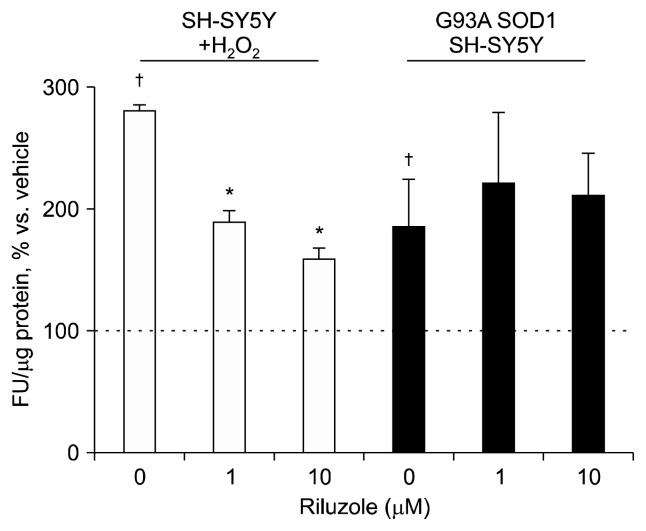Fig. 2.
Effect of riluzole exposure (1–10 μM/24 hr) on H2O2-induced whole-cell reactive oxygen species (ROS) production in SH-SY5Y cells. H2O2 (200 μM/24 hr) induces a about three-fold increased ROS production in SH-SY5Y cells (striped bars; †p < 0.001 vs. vehicle-treated cells) and riluzole co-exposure (1–10 μM/24 hr) significantly counteracts H2O2-induced ROS production (*p < 0.05 vs. H2O2-treated cells); black bars show that mutant G93A SOD1 cells display under basal conditions a about two-fold increase of ROS levels with respect to parental cells (†p < 0.001) and that riluzole (1–10 μM/24 hr) is unable to modify this condition.
FU, fluorescence units.

